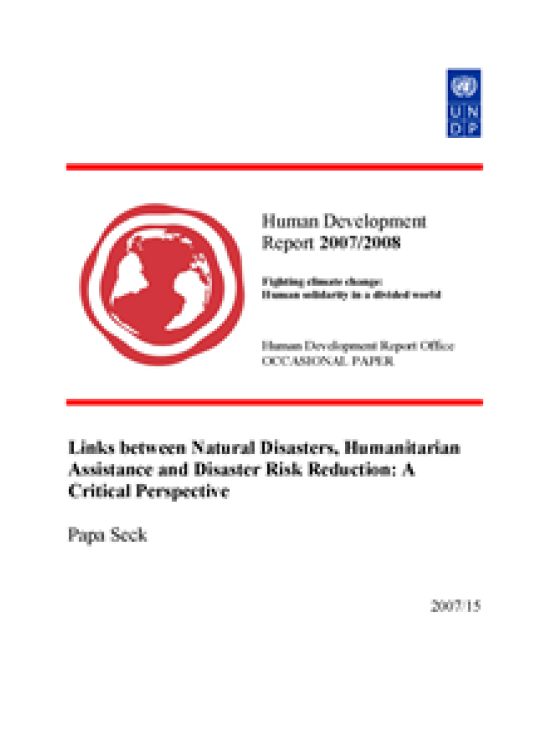Links between Natural Disasters, Humanitarian Assistance and Disaster Risk Reduction
A Critical Perspective

Download Report by Language
Document
seckpapa.pdf
(342.87 KB)
Citation
Seck, Papa. 2008. Links between Natural Disasters, Humanitarian Assistance and Disaster Risk Reduction: A Critical Perspective. New York.
Links between Natural Disasters, Humanitarian Assistance and Disaster Risk Reduction
A Critical Perspective
Posted on: January 01, 2008
Development aid has always been subject to a protracted debate concerning its effectiveness with arguments given on both sides. A major part of this debate, especially for the period covering the cold war has been to what extent aid to developing countries is enmeshed with political and strategic considerations on the part of donor countries. Humanitarian aid, referring to aid following disastrous events, has mostly stayed on the sidelines of this discourse, primarily due to the supposedly moral and humanitarian components that are imbedded in it. On the face of it, the principles that underpin the humanitarian and relief sectors, namely proportionality, neutrality, impartiality and independence should make it less prone to controversy. However, the increased frequency and destructiveness of natural and man-made hazards of the last few years have come to question that received wisdom. In addition, the institutional separation model that characterizes the relief and development sectors has largely failed in the past, bringing to the forefront the twin concepts of risk and vulnerability, and the inextricable links between natural disasters and human development.

